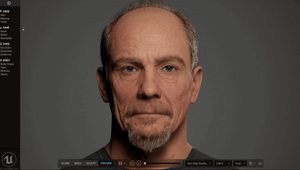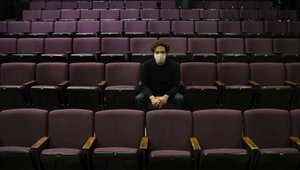
Virtual Reality: The Time is Now

You may remember the early, over-hyped VR attempts of the mid 1990s - think SegaVR and Nintendo’s “Virtual Boy” - that were unable to deliver a truly immersive experience and in many cases just left people feeling nauseous. Well, now you can believe the hype. 2016 is the year VR will become a viable consumer product.
So what’s changed in the past twenty years?
Technology is now capable of creating ‘presence’
With major advancements in graphics, screen resolution, fields of view, head and spatial tracking and computer processing powers, VR headsets can now achieve “presence” - the real magic of VR. Presence is commonly equated with the concept of “immersion”, the perception of being physically present in a nonphysical world. Presence is an incredibly powerful sensation, and it’s unique to VR; there’s no way to create it in any other medium.
The same hardware that enables presence is also highly effective at reducing motion sickness, so thankfully we can say goodbye to the nauseous inducing VR of the 1990s.
Smartphones and the Internet
Smartphones have arrived on the scene, facilitating the mass adoption of VR. Some VR headsets, like the Merge and Freefly, will take any smartphone providing an easy, and cheap, gateway to countless VR experiences. For the Samsung Gear VR, it is entirely based around its range of Galaxy smartphones. The internet is also a major factor. It’s an essential platform to help people consume and experience VR and enable social experiences in VR which were entirely absent in the mid-90s.
Everyone wants a piece of it
Unlike the '90s, this isn’t just a few big gaming companies experimenting in VR. Every major consumer technology company has, or will be making, significant investments in VR, and these companies will need to bring products to market off the back of their investments. 2016 is the year this is all going to happen as heavyweights like Oculus Rift, Vive and Sony’s Playstation VR all bring out their headsets.
Creating content is easier
As headsets start making it into people’s homes, we’ll see an increase in demand for content and luckily it’s got easier in the past few years. Through the continued innovation in technologies, engines and libraries like Three.js/ WebGL and Unity / Unreal there will be more opportunities for developers to build VR experiences in 2016. 360 VR content will also get easier as the dedicated cameras evolve and reduce in price.
The platforms are there to facilitate good content
Vive, running on Steam, has a huge platform and pre-existing ecosystem to deliver content. Sony’s PlayStation has a ready-made user-base of 36m and a known platform for delivering games and other content. Oculus had to play catch up, but with Facebook’s investment it too has a delivery platform infrastructure. Whilst YouTube and Facebook have been delivering 360-degree video experiences in both VR and desktop.
There’s appetite for VR
Radio took 38 years to reach 50M users, television took 14 years, and the Internet took 4 years. VR is on a much quicker trajectory. If we are to believe current reports, we could see 50M VR users in the world by 2018. It’s a huge opportunity. Agencies and brands have been experimenting with VR for a few years now. At REWIND 80% of our workflow is in 360-degree video or true VR, a huge jump from where we were 2-3 years ago. It’s not just nerdy geeks that know about VR, VR has gone mainstream, helped, for example, by the Freefly headset being sold in John Lewis. By 2020, some people will spend more time in VR than in the real world, a scary but real prediction.
All these factors contribute to a time that couldn't be more ripe for VR. It’s an exciting time. VR that is done right, is powerful. In terms of an experience that can transport someone in a completely unique new way, there is nothing like it. It's the next generation of storytelling, so much more immersive than any other digital experience people have known.










